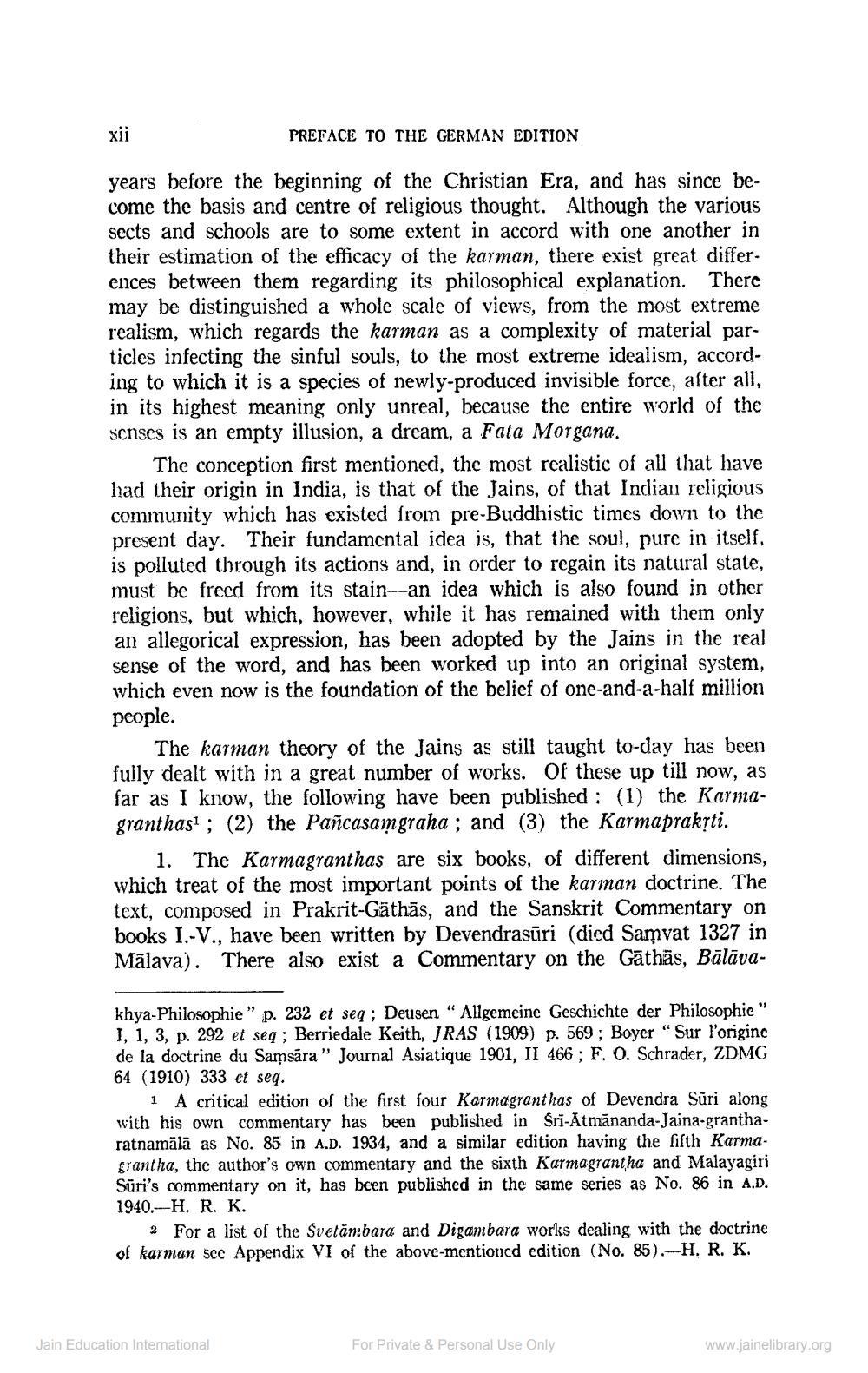________________
xii
PREFACE TO THE GERMAN EDITION
years before the beginning of the Christian Era, and has since become the basis and centre of religious thought. Although the various sects and schools are to some extent in accord with one another in their estimation of the efficacy of the karman, there exist great differences between them regarding its philosophical explanation. There may be distinguished a whole scale of views, from the most extreme realism, which regards the karman as a complexity of material particles infecting the sinful souls, to the most extreme idealism, according to which it is a species of newly-produced invisible force, after all, in its highest meaning only unreal, because the entire world of the senses is an empty illusion, a dream, a Fata Morgana.
The conception first mentioned, the most realistic of all that have had their origin in India, is that of the Jains, of that Indian religious community which has existed from pre-Buddhistic times down to the present day. Their fundamental idea is, that the soul, pure in itself, is polluted through its actions and, in order to regain its natural state, must be freed from its stain--an idea which is also found in other religions, but which, however, while it has remained with them only an allegorical expression, has been adopted by the Jains in the real sense of the word, and has been worked up into an original system, which even now is the foundation of the belief of one-and-a-half million people.
The karman theory of the Jains as still taught to-day has been fully dealt with in a great number of works. Of these up till now, as far as I know, the following have been published: (1) the Karmagranthas1; (2) the Pañcasamgraha; and (3) the Karmaprakṛti.
1. The Karmagranthas are six books, of different dimensions, which treat of the most important points of the karman doctrine. The text, composed in Prakrit-Gäthās, and the Sanskrit Commentary on books I.-V., have been written by Devendrasūri (died Samvat 1327 in Mālava). There also exist a Commentary on the Gathās, Bālāva
khya-Philosophie" p. 232 et seq; Deusen "Allgemeine Geschichte der Philosophic I, 1, 3, p. 292 et seq; Berriedale Keith, JRAS (1909) p. 569; Boyer "Sur l'origine de la doctrine du Samsara" Journal Asiatique 1901, II 466; F. O. Schrader, ZDMG 64 (1910) 333 et seq.
1 A critical edition of the first four Karmagranthas of Devendra Suri along with his own commentary has been published in Sri-Atmananda-Jaina-grantharatnamālā as No. 85 in A.D. 1934, and a similar edition having the fifth Karmagrantha, the author's own commentary and the sixth Karmagrantha and Malayagiri Suri's commentary on it, has been published in the same series as No. 86 in A.D. 1940.-H. R. K.
2 For a list of the Svetambara and Digambara works dealing with the doctrine of karman sec Appendix VI of the above-mentioned edition (No. 85).-H. R. K.
Jain Education International
For Private & Personal Use Only
www.jainelibrary.org




